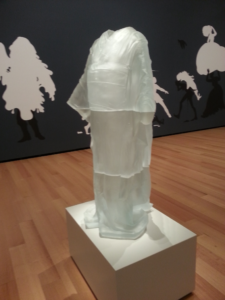Intermittent Electrical Auricular Acupuncture Stimulation and HRV for Hot Flashes in Post surgical Prostate Patients
Kristen Sparrow • November 06, 2017


This group is experimenting with an approach that I have been using, ie electrical stimulation of the ear to normalize autonomic disturbances. They’ve taken a more aggressive approach by placing electrodes in the ear and then giving 96 hours of intermittent ear stimulation (2 hours on, 2 hours off) every other week for 6 weeks. They alternated ears for the procedure. Their results were impressive, looking at Hot Flash frequency, quality of life scores, sleep and HRV. I really like the fact that they reported each individual patient’s HRV results over time since that has much more significance than the combined data. Full text article available by clicking on the title below.
I have given ear stimulators to a few motivated patients. This gives me impetus to be more assertive in suggesting this safe treatment.
Intermittent 96-Hour Auricular Electroacupuncture for Hot Flashes in Patients with Prostate Cancer: A Pilot Study
Abstract
Objective: The hot flash is a common vasomotor disorder that causes distress in menopausal women and that can be debilitating in men with prostate cancer who are treated with androgen deprivation therapy (ADT). The utility of auricular electroacupuncture (AEA) was tested exclusively for a small cohort of men with ADT-induced vasomotor symptoms while the men underwent a course of curative radiotherapy.
Materials and Methods: Prior to and during radiotherapy treatment, men with vasomotor symptoms were given repeated questionnaires regarding severity and frequency of hot flashes, quality of life (QoL), and sleep over a 6-week span of an AEA protocol. Each subject’s heart rate variability (HRV) was obtained repeatedly every week in an ambulatory setting with a BlueCardio device (BlueCardio, Miami, FL). The AEA intervention was given with a Neurova device (Nunka Corporation, CM Wellness Clinic, Pompano Beach, FL) that used three needles at Master points Sympathetic, Shen Men, and Point Zero, which were located precisely with a bipolar point finder. Intermittent microcurrent stimulation was given every other week for 96 hours, using a cyclic programmed output of 2 hours on and 2 hours off.
Results: Of 10 men completing the 6-week protocol, all responded with significantly lower frequency, duration, and severity of vasomotor symptoms; QoL and sleep scores improved significantly. The HRV analysis showed significantly lower low-frequency/high-frequency power ratios in each individual, compared to baseline, that were consistent with the subjective responses.
Conclusions: Vasomotor disturbance, caused by gender hormone withdrawal—either naturally or in patients treated with ADT, as in this study—is a well-defined neurophysiologic condition. This disorder is a constellation of findings that reflect autonomic disturbances of excessive sympathetic and reduced parasympathetic activity. AEA intervention with the Neurova device is simple to administer, is well-tolerated, and appears to be effective for restoring autonomic balance. Further evaluation of AEA for vasomotor disturbances could provide more insight into the mechanisms of AEA neuromodulation and potentially lead to approaches for treating not only these symptoms but also other neurologic conditions with components of autonomic disturbances.


 1
1